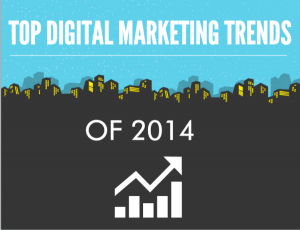By Band of Sisters
More than 30 years ago, we were founding members of our company’s Women’s Resource Network. We wore our power suits and our sensible heels into conference rooms to address the challenge of the day: not enough women in positions of power.
Despite an increase in women holding leadership positions, working together for decades, supporting each other, and marching upwards to the boardroom, our collective observations have not changed: women leaders still experience a more difficult time climbing up the professional professional ladder than men.
This is why we were not surprised by McKinsey & Company’s latest Women in the Workplace study, which details a dynamic that may be obvious to working women, but perhaps not to enough working men: women leaders want to advance, but they face significant headwinds.
The study calls attention to a climate we know all too well. Women are exhausted from the extra hurdles they face trying to advance; they feel overworked and undervalued, and they are fed up with microaggressions and toxic workplace cultures. And the data is even more grim for women of color and those of intersecting identities, including sexual orientation and disability status.
As women leaders, we are among the fortunate ones—the six of us professionally “grew up” at PepsiCo, where we spent a large part of our careers. There, we were lucky to work with leaders who encouraged learning, personal development, innovative thinking, and trying new things. The climate was not perfect—but it was a culture of constant improvement and a real dedication to diversity. Of course, we had (and continue to have) each other’s backs and our work friendships have lasted throughout our individual career journeys.
Yet, here we are. After years of advocating for women leaders, not enough has changed.
We can’t believe we are still talking about this.

Talking about the impact of the pandemic on women is no longer enough. Debating how to bring people back to the office is missing the point. According to McKinsey’s report, women are leaving companies at the highest rate in years and the gap between women and men leaving is the largest ever seen. Note this dire prediction from the study: “If companies don’t take action, they won’t just lose their women leaders, they risk losing the next generation of women leaders, too.”
So what’s a leader to do?
We’d like to offer some how-tos to move this conversation forward. As six C-suite women, we know first-hand the small indignities, barriers, and slights that women face every day in the corporate workplace. We believe the walls of gender inequity are not built with enormous stones, but brick by brick and day by day. These micro-aggressions add up over time and women eventually get exhausted and opt out. It’s time to finally take down the stubborn remnants of gender bias in the workplace.
Here are five first steps leaders can take to support women in the workplace:
Manage meetings thoughtfully
Remote work environments alone can’t close gender inequality. Whether it’s a live meeting or a Zoom call, create a culture in which all voices are heard. To help accomplish this, pay attention to how ideas are raised and discussed.
Women are more likely than men to experience having a coworker get credit for their idea. Studies suggest that not feeling their ideas are heard or valued is a top reason why women leave the workforce. Managing meetings thoughtfully can help mitigate this.
Arrive early to ensure pre-meeting “chit-chat” includes everyone. Be thoughtful about who gets credit for ideas. And, if you witness a misattribution, be the ally who corrects it.
Look out for lazy language
Another thing leaders can do to help women in the workplace is to listen closely to vague terms that advance men such as “he’s a great guy.” Don’t tell women they need to have “gravitas” or “executive presence” if you can’t back it up with specifics about impact.
And individuals should pay extra attention to lazy language aimed at women of color: Black women are even more likely to have colleagues question their competence and less likely to have senior colleagues take sponsorship actions on their behalf.
Reward extra credit work fairly
Many companies have responded to the need for inclusion by creating task forces and committees, but this additional work often goes unrewarded. Women are twice as likely as men to spend substantial time on DEI work and often don’t get credit for this added work in their performance reviews.
Researchers have found that women spend 200 more hours per year than men on non-promotable tasks, such as sitting on committees, answering questions from new employees, resolving disputes between coworkers.
Recognizing this work can help give women credit for hard work. And making sure that women aren’t required to do this kind of work, can improve workplace equity.
Enforce chore equity
Similarly, leaders can make sure that workplace “chores” are equally distributed among workers.
Pay attention to lower-skill chores and who is asked to handle them. In a meeting, who is asked to take notes? Who is asked to plan the retirement luncheon? For instance, don’t ask a woman to project-manage because she has great handwriting.
Just like how chores should be spread around equally at home, they should also spread around evenly at work.
Minimize microaggressions
Accidental acts of sexism may not be not ill intended, but over time, they can make women feel diminished and build an unwelcome work environment.
For example, don’t say “girl” when you mean “woman.” As in, “Did you meet the new girl in accounting?”
Don’t engage in awkward chivalry, such as apologizing when cursing in front of a woman.
And please don’t ask women to smile more.
The post-COVID workplace needs women–and women need an environment that supports their success. Hybrid offices and commute times are important discussion topics at this moment in time. But it’s critical to make sure culture is the primary conversation. A strong culture helps women to do their best work, and ultimately, makes the headwinds more equitable so more women reach and stay in leadership. In the minds of the next generation of women leaders, this culture won’t be optional.
Dawn Hudson, Angelique Bellmer Krembs, Katie Lacey, Lori Tauber Marcus, Cie Nicholson, and Mitzi Short are the founders of the Band of Sisters, a consultancy focused on improving corporate culture for women. They recently published a book on the topic: ‘You Should Smile More: How to Dismantle Gender Bias in the Workplace.’
(21)







